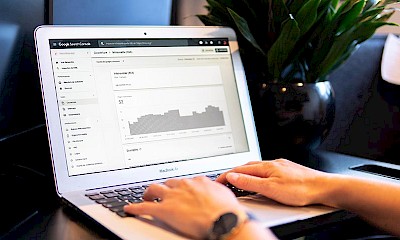Call-to-action (CTA)
CTA stands for "Call to Action", a marketing term that refers to a design button or text prompt that is used to get an immediate response or encouragement to take a desired action from the viewer, such as "Buy Now" or "Learn More". It is a crucial element in advertising materials that aims to increase conversion rates by directly prompting viewers to perform an action that is in line with the marketing or advertising campaign objectives.
The most important things at a glance:
- CTA = call to action, e.g. “Buy now”, “Learn more”
- Goal: To encourage users to take the desired action (purchase, registration, download, etc.)
- Places of use: Websites, landing pages, meta descriptions, ads, print, TV, radio
- Characteristics of good CTAs: clear, eye-catching, user-oriented, possibly with urgency
- Design: eye-catching buttons/colors, short, concise formulations
- Examples: “Try for free”, “Book an appointment now”, “Download now”
- Role in SEO: CTA in meta descriptions increases click-through rate (CTR) in the SERPs
- Conclusion: Indispensable for conversion & success of marketing measures
What is CTA - a definition
A CTA is used in advertising to encourage users to interact with the product or brand in a specific way, regardless of the medium used. The main goal of a CTA is not exclusively the immediate conversion into sales (conversions). It can also aim to generate leads or encourage readers to click on further content and thereby extend the time they spend on a page.
Objectives of call-to-actions
Effective CTAs are used for advertising campaigns in print, television, radio and online. With the help of CTAs, marketers demonstrably increase conversions:
Where are CTAs used?
The areas of application of CTAs are numerous. For example, CTAs take place here:
- Websites & landing pages
- Meta description
- Email/newsletter marketing
- Online text ads
- Television advertising
- Radio spots
- Print advertising
- Display ads
It depends on the design
It is important that a CTA is designed in such a way that the consumer feels encouraged, but not pressured, to take an action. The CTA aims to inspire the desire to act. It is usually kept brief, ideally in one sentence or a few concise words. Visually, it should be clearly distinguishable from the rest of the content of the ad or website in order to attract attention.
Online, special "buttons" are often used to highlight the CTA. These buttons are clearly labeled and initiate the desired action with one click. They usually stand out with a striking color scheme and have a simple design consisting of text on a high-contrast background.
What makes a good CTA?
A good CTA is critical to the effectiveness of marketing campaigns, websites and promotional materials. Here are three to four key elements that make an effective CTA:
- Clear and concise message: a good CTA should clearly communicate what is expected of the user. Use direct, action-oriented verbs such as "buy", "sign up", "download" or "contact". The message should be short and to the point so that users know exactly what to do next.
- Visibility and design: The CTA should be easy to find and visually striking. This can be achieved by using colors that stand out from the rest of the page, by size or by placing it in a prominent position. The design should draw attention to the CTA without being overwhelming or distracting.
- Focus on the benefit: An effective CTA communicates the value or benefit the user will receive if they perform the desired action. This could be a free download, a special offer or access to exclusive information. By focusing on the benefit for the addressee, you increase the likelihood that they will act.
- Urgency: A sense of urgency or time constraint can encourage users to act immediately rather than postpone the decision. This can be achieved through limited time offers, the use of words such as "Now", "Immediately" or "Limited Offer" or by displaying limited availability.
Together, these elements help to ensure that the CTA not only stands out, but also elicits the desired response from users.
Optimize the click rate with CTAs
A call-to-action is an important component in the meta description of a website. This meta tag is used by search engines to create the snippet in the search results pages (SERPs). As soon as a user has carried out a search and the results are available, they only have a few milliseconds to decide whether to click. A compelling CTA in the snippet can increase the likelihood that the user will choose this option and thus reach the website. The CTA therefore plays a key role in optimizing the click-through rate (CTR) in the SERPs and is becoming an important part of SEO and on-page optimization.
Conclusion
A call-to-action (CTA) is a central element in marketing communication that aims to elicit an immediate response from the user, be it through a click, a purchase or a newsletter subscription. With concise, action-oriented messages and an eye-catching design, an effective CTA promotes conversion rates by directly inviting users to interact. Not only in digital media such as websites and online ads, but also in traditional advertising formats such as print and radio, the CTA plays an important role by giving users clear instructions and thus contributing to the achievement of marketing campaign goals. In addition, the CTA is an essential part of on-page SEO, as it contributes to the visibility and success of the website by optimizing the CTR in the SERPs.








